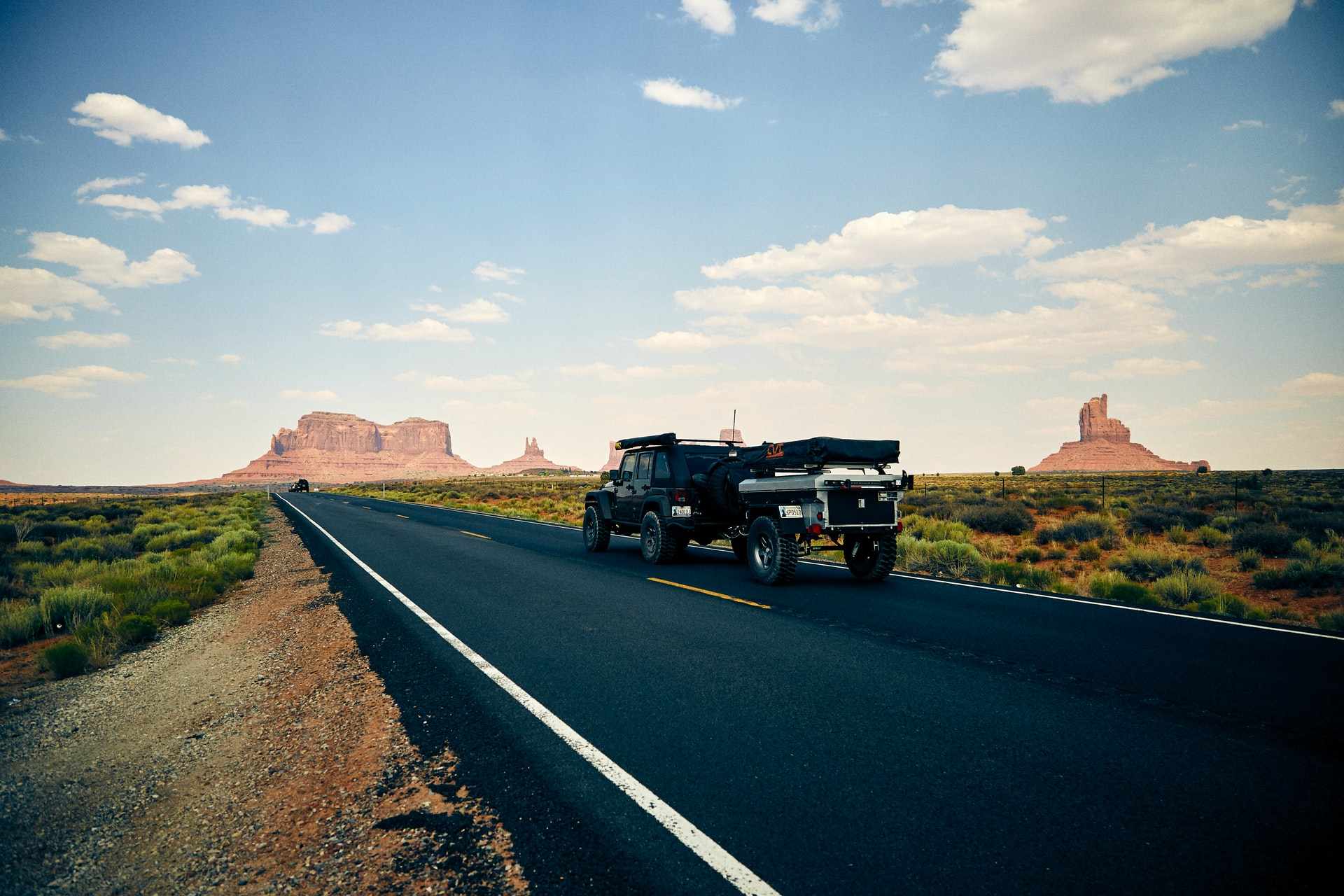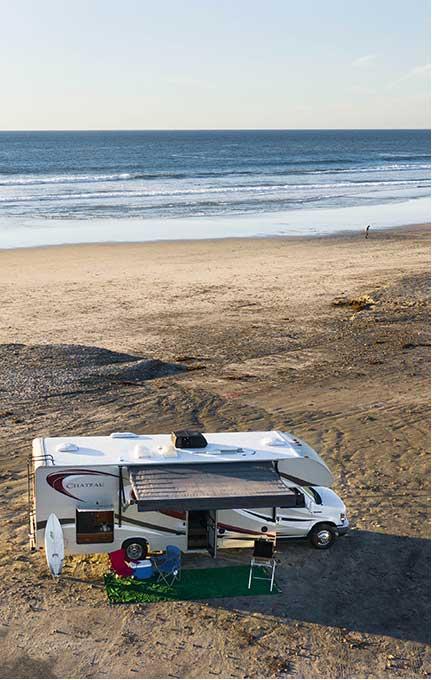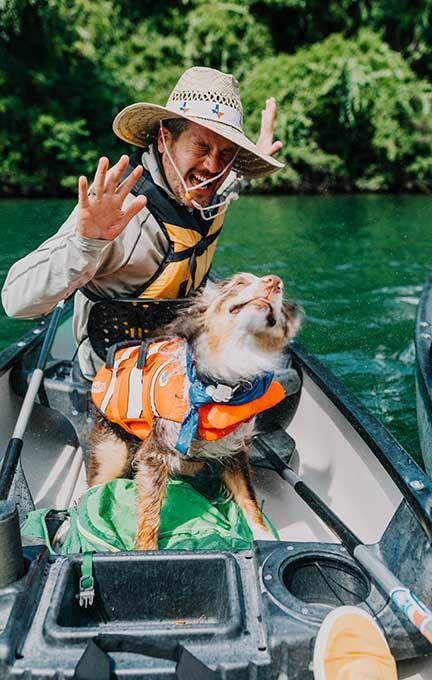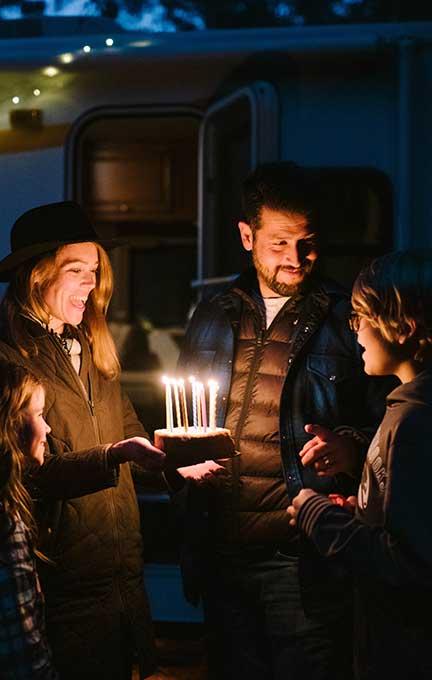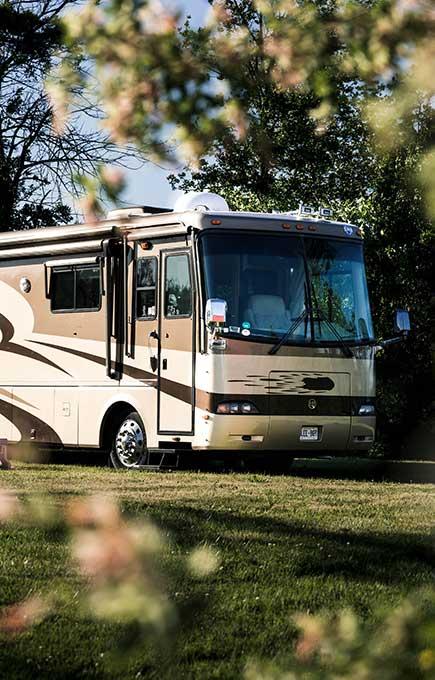Driving a Class B, also referred to as a campervan, is similar to driving a minivan or large SUV. Smaller than Class A or Cs, they are relatively easy for anyone to drive!
That said, there are still some things to consider before heading off in your campervan, including:
- dimensions
- driving
- storage
Let’s get into it!

Vehicle Dimensions
Though the drive will feel similar to being behind the wheel of a van, the dimensions might not be quite the same. Knowing your specific vehicle dimensions is important, as it will help you judge whether or not you can fit in a parking space, under a bridge, or even through a drive-thru!
Height
Overpasses may provide plenty of clearance for the average vehicle while posing a risk to you in your campervan. Know your vehicle height and watch for signs so that you avoid making the mistake of damaging your rig on a low overpass.
You can find GPS navigation technology with RV-specific settings to help you avoid low bridges, narrow roads, and other obstacles.

Weight
Unlike an SUV, a campervan is a home on wheels, and with that comes extra weight. This means two things:
- You can more easily get stuck in mud or soft ground.
- Slowing down and stopping requires more time and distance.
Be aware of this added weight, try to avoid soft ground at campsite and off-roading, and make sure to start braking further in advance for stops or speed limit reductions.
Length
If you’re not used to driving a vehicle this size, there are a few things to keep in mind:
- Take wider turns.
- Leave more space when merging or switching lanes.
- It may be best when parking to take spots further from other vehicles.
Average Height Ranges: Can Your Camper Fit?
Bridges/Overpasses: 14-16 ft
Drive-Thrus: ~9 ft
Car Washes: ~7 ft
Driving Your Class B
Other than your larger than average size, there are some other considerations to take into account before getting behind the wheel.
Fueling and Mileage
Many Class B motorhomes take diesel fuel rather than regular unleaded gasoline. Refer to the owner’s manual for fuel recommendations before you fill up your rig! Filling any vehicle up with the wrong fuel can cause serious damage to the engine, and nobody wants that.
After filling the tank, you can expect to get anywhere from 18 to 25 miles per gallon. That’s better mileage than some large diesel trucks!
Storage
Class B’s are the smallest of the motorhome classes, but they still offer storage spaces that need to be secured before you hit the road. You’ll want to make sure that your stuff is stowed away and that all overhead and exterior storage spaces, as well as awnings, are fastened securely.
Some helpful items to keep everything in its place are:
- mounting putty
- velcro strips
- bungee cords
- tension rods
- camping straps
Before you put your car back in drive, always double-check that everything is secured.
Get Moving!
With just a little practice around the parking lot, you’re ready to hit the road. Throw on your RV navigation, secure your stuff, and get a move on!

